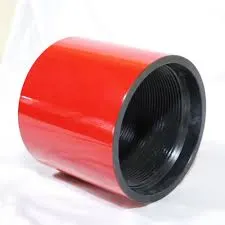- Afrikaans
- Albanian
- Amharic
- Arabic
- Armenian
- Azerbaijani
- Basque
- Belarusian
- Bengali
- Bosnian
- Bulgarian
- Catalan
- Cebuano
- Corsican
- Croatian
- Czech
- Danish
- Dutch
- English
- Esperanto
- Estonian
- Finnish
- French
- Frisian
- Galician
- Georgian
- German
- Greek
- Gujarati
- Haitian Creole
- hausa
- hawaiian
- Hebrew
- Hindi
- Miao
- Hungarian
- Icelandic
- igbo
- Indonesian
- irish
- Italian
- Japanese
- Javanese
- Kannada
- kazakh
- Khmer
- Rwandese
- Korean
- Kurdish
- Kyrgyz
- Lao
- Latin
- Latvian
- Lithuanian
- Luxembourgish
- Macedonian
- Malgashi
- Malay
- Malayalam
- Maltese
- Maori
- Marathi
- Mongolian
- Myanmar
- Nepali
- Norwegian
- Norwegian
- Occitan
- Pashto
- Persian
- Polish
- Portuguese
- Punjabi
- Romanian
- Russian
- Samoan
- Scottish Gaelic
- Serbian
- Sesotho
- Shona
- Sindhi
- Sinhala
- Slovak
- Slovenian
- Somali
- Spanish
- Sundanese
- Swahili
- Swedish
- Tagalog
- Tajik
- Tamil
- Tatar
- Telugu
- Thai
- Turkish
- Turkmen
- Ukrainian
- Urdu
- Uighur
- Uzbek
- Vietnamese
- Welsh
- Bantu
- Yiddish
- Yoruba
- Zulu
Durable Stainless Steel Threaded Connector for Reliable Piping Applications
Understanding Stainless Steel Threaded Couplings
Stainless steel threaded couplings are essential components in a wide array of applications, particularly in plumbing, manufacturing, and construction. These connectors are designed to join two pipes or tubes, ensuring a secure and leak-proof fit. Their use of stainless steel as the primary material provides numerous benefits, particularly in environments that require high durability and resistance to corrosion.
What are Threaded Couplings?
Threaded couplings are fittings with internal threads that allow them to connect two external-threaded fittings, such as pipes. The threads provide a mechanical connection that can withstand pressure, making them especially useful in various industries, including water and gas distribution, chemical processing, and HVAC systems. The design of the coupling can vary, with different lengths and diameters available to accommodate specific piping systems.
Advantages of Stainless Steel
The decision to use stainless steel for threaded couplings is primarily motivated by its unique properties. Stainless steel is an alloy that generally contains iron, chromium, and nickel, which contribute to its exceptional corrosion resistance. This characteristic makes stainless steel ideal for use in environments exposed to moisture, chemicals, or extreme temperatures.
1. Corrosion Resistance Unlike traditional carbon steel, stainless steel does not rust, allowing it to maintain its structural integrity over time. This property is vital for applications in marine environments, food processing, and chemical storage, where exposure to corrosive substances can degrade the material.
2. Strength and Durability Stainless steel threaded couplings exhibit high tensile strength, enabling them to handle significant stress without deformation or failure. They are exceptional choices for high-pressure applications where the risk of breakage must be minimized.
stainless steel threaded coupling

3. Hygiene and Cleanliness Stainless steel is non-porous and easy to clean, making it a popular choice in sanitary applications. Industries that require strict cleanliness standards, such as pharmaceuticals and food production, often use stainless steel fittings to prevent contamination.
4. Aesthetic Appeal Beyond functionality, stainless steel has a modern, sleek appearance that can enhance the visual appeal of installations, particularly in architectural applications where visible plumbing fixtures are a consideration.
Applications
Stainless steel threaded couplings are versatile and can be used in numerous scenarios. In plumbing, they are commonly employed in residential and commercial building systems to connect water pipes. In industrial applications, they are used in diverse manufacturing processes, including oil and gas extraction where durability is essential.
Moreover, these couplings are routinely used in heating and cooling systems, facilitating the installation of HVAC components that require reliable connections to ensure efficient operation.
Conclusion
In summary, stainless steel threaded couplings play a crucial role in various industries by providing a robust and reliable means of joining piping systems. Their resistance to corrosion, strength, hygienic properties, and aesthetic advantages make them a preferred choice in both domestic and industrial applications. As industries continue to advance, the demand for durable and efficient connection solutions like stainless steel threaded couplings is likely to grow, underscoring their importance in modern engineering and construction.
-
Tubing Pup Joints: Essential Components for Oil and Gas OperationsNewsJul.10,2025
-
Pup Joints: Essential Components for Reliable Drilling OperationsNewsJul.10,2025
-
Pipe Couplings: Connecting Your World EfficientlyNewsJul.10,2025
-
Mastering Oilfield Operations with Quality Tubing and CasingNewsJul.10,2025
-
High-Quality Casing Couplings for Every NeedNewsJul.10,2025
-
Boost Your Drilling Efficiency with Premium Crossover Tools & Seating NipplesNewsJul.10,2025







